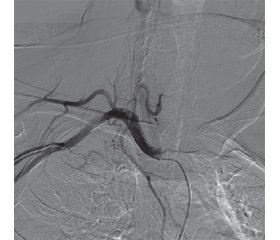Журнал «Медицина неотложных состояний» Том 19, №5, 2023
Вернуться к номеру
Імплантація центральних порт-систем для в/в введення. Ускладнення і наслідки для пацієнта на прикладі клінічного випадку
Авторы: Строкань А.М., Субботін В.Ю., Кметюк Я.В., Денисов С.Ю.
Клінічна лікарня «Феофанія» Державного управління справами, м. Київ, Україна
Рубрики: Медицина неотложных состояний
Разделы: Справочник специалиста
Версия для печати
Імплантовані центральні порт-системи для в/в введення ліків широко використовуються в онкологічних хворих, які потребують тривалого доступу, проведення специфічного хіміотерапевтичного лікування та парентерального харчування. Встановлення центральних порт-систем вирішує проблему венозного доступу, але, на жаль, може призводити до ускладнень, у тому числі серйозних і необоротних. Наводимо клінічний випадок пацієнтки, 49 років, з онкологічною патологією, якій з метою проведення спеціалізованого лікування було імплантовано порт-систему для в/в терапії. Помилкове або недіагностоване розташування порт-системи у підключичній артерії та проведення сеансів неоад’ювантної поліхіміотерапії призвело до мієломаляції спинного мозку з подальшим розвитком мієлорадикулопатії, появи і розвитку стійких неврологічних порушень. Після радіологічної діагностики і верифікації цього ускладнення було проведено черезшкірну транслюмінальну балонну ангіопластику зі стентуванням одиничним стентом та видаленням центральної порт-системи. У цьому повідомленні описані ускладнення встановлення центральних порт-систем та детально розглянуто клінічний випадок ускладнення і методи його усунення при неправильній імплантації порт-системи в артерію.
Implanted central vascular access devices for intravenous administration of drugs are widely used in cancer patients who require long-term access, specific chemotherapy and parenteral nutrition. Installation of central vascular access devices solves the problem of venous access, but, unfortunately, it can lead to complications, including serious and irreversible ones. Here is a clinical case of cancer in a 49-year-old female patient who was implanted with a vascular access device for intravenous therapy. The incorrect and undiagnosed insertion of the vascular access device in the subclavian artery and also neoadjuvant polychemotherapy sessions led to myelomalacia with the subsequent development of myeloradiculopathy, the emergence and development of persistent neurological disorders. After radiological diagnosis and verification of this complication, percutaneous transluminal angioplasty with single stenting and removal of the central vascular access device was performed. The article presents complications with the insertion of central vascular access devices and discusses in detail a clinical case of complication and methods for its solution when this device is incorrectly implanted in the artery.
центральна порт-система; судинний доступ; ускладнення; помилкова катетеризація артерій; мієломаляція спинного мозку; черезшкірна транслюмінальна балонна ангіопластика
central vascular access device; vascular access; complications; false arterial catheterization; myelomalacia; percutaneous transluminal angioplasty

